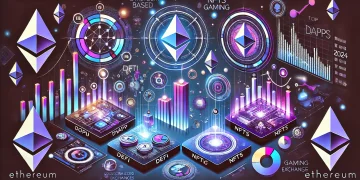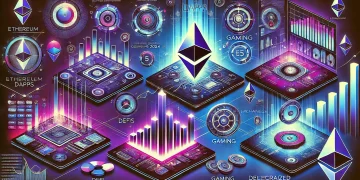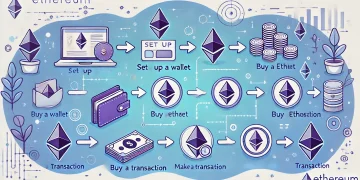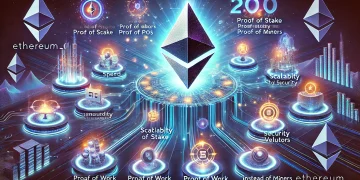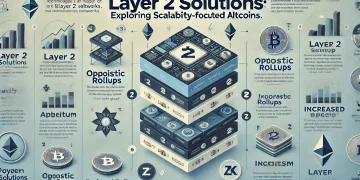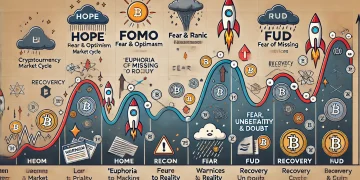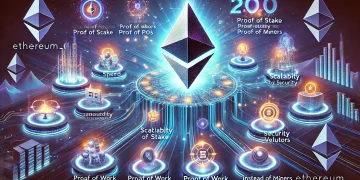In the evolving landscape of blockchain technology, Polygon has emerged as a frontrunner in the Layer-2 scaling revolution, offering innovative solutions to address Ethereum’s scalability challenges. This comprehensive analysis explores how Polygon is transforming the blockchain ecosystem through its multi-faceted approach to scaling and its growing influence in the Web3 space.
The Evolution of Polygon’s Technology
Originally launched as the Matic Network, Polygon has transformed from a simple plasma-based scaling solution into a comprehensive platform for blockchain scaling and infrastructure development. This evolution represents a strategic pivot that has positioned Polygon at the forefront of Ethereum’s scaling ecosystem, offering multiple solutions to address different use cases and requirements.
Through continuous innovation and development, Polygon has expanded its technological arsenal to include various scaling solutions, from optimistic rollups to zero-knowledge proofs. This multi-solution approach has enabled Polygon to cater to diverse developer needs while maintaining compatibility with Ethereum’s security and decentralization principles.
Zero-Knowledge Technology Leadership
Polygon’s significant investments in zero-knowledge (ZK) technology have established it as a leader in this crucial area of blockchain scaling. The platform’s ZK solutions, including Polygon zkEVM and Polygon Miden, represent groundbreaking advances in making zero-knowledge proofs practical and accessible for mainstream blockchain applications.
The implementation of ZK technology has enabled Polygon to achieve remarkable improvements in transaction processing speed and cost efficiency while maintaining Ethereum’s security guarantees. These developments have attracted significant attention from developers and enterprises looking to build scalable applications without compromising on security or decentralization.
Ecosystem Growth and Adoption
Polygon’s ecosystem has experienced exponential growth, attracting thousands of decentralized applications (dApps) across various sectors including DeFi, gaming, and NFTs. The platform’s ability to offer low transaction costs and high throughput has made it particularly attractive to developers and users seeking affordable and efficient blockchain solutions.
Major brands and enterprises have chosen Polygon as their preferred platform for blockchain initiatives, demonstrating the network’s growing institutional adoption. The platform’s compatibility with Ethereum tools and infrastructure has simplified the migration process for existing projects while enabling new ones to launch with minimal friction.
Technical Infrastructure and Scalability
Polygon’s technical infrastructure is designed to support massive scaling without compromising on decentralization or security. The platform’s modular architecture allows for the implementation of different scaling solutions optimized for specific use cases, from high-throughput payment systems to complex smart contract applications.
Recent technological improvements have further enhanced Polygon’s scalability capabilities, with some solutions achieving throughput of thousands of transactions per second. The platform’s commitment to continuous technical innovation ensures it stays ahead of growing demand while maintaining competitive transaction costs.
Developer Tools and Support
Understanding the crucial role of developers in ecosystem growth, Polygon has invested heavily in developer tools and support infrastructure. The platform offers comprehensive documentation, development frameworks, and technical support to facilitate rapid application development and deployment.
The availability of familiar development tools and compatibility with Ethereum’s development environment has made Polygon an attractive choice for both experienced blockchain developers and those new to the space. Regular hackathons, developer grants, and educational initiatives further strengthen the platform’s developer ecosystem.
Economic Model and MATIC Token Utility
The MATIC token plays a central role in Polygon’s ecosystem, serving multiple functions including governance, staking, and fee payment. The token’s economic model is designed to align the interests of various stakeholders while ensuring the network’s long-term sustainability and growth.
Recent tokenomics improvements and staking mechanisms have enhanced the token’s utility and value proposition. The introduction of new use cases and burning mechanisms has created additional demand drivers for the MATIC token while supporting network security and decentralization.
Partnerships and Strategic Initiatives
Polygon’s strategic partnerships with major technology companies, financial institutions, and blockchain projects have significantly expanded its reach and capabilities. These collaborations have led to innovative implementations of blockchain technology across various industries, from finance to entertainment.
The platform’s ability to attract and maintain high-profile partnerships demonstrates its growing influence in the blockchain space. These relationships have also contributed to increased adoption and integration of Polygon’s technology in mainstream applications.
Frequently Asked Questions
Q: How does Polygon achieve faster and cheaper transactions than Ethereum? A: Polygon uses various scaling solutions including sidechains, rollups, and zero-knowledge proofs to process transactions more efficiently while leveraging Ethereum’s security.
Q: What advantages does Polygon offer to developers? A: Polygon provides Ethereum compatibility, low transaction costs, high throughput, comprehensive development tools, and multiple scaling solutions to suit different application needs.
Q: How does Polygon ensure security and decentralization? A: Polygon implements multiple security layers including its own validator network and checkpoints to Ethereum, while maintaining decentralization through a distributed network of validators and stakeholders.
Q: What role does the MATIC token play in the ecosystem? A: MATIC is used for network fees, staking, governance, and as a utility token within the Polygon ecosystem, playing a crucial role in maintaining network security and operations.
Q: How does Polygon compare to other Layer-2 solutions? A: Polygon differentiates itself through its multi-solution approach, offering various scaling technologies to meet different needs while maintaining strong Ethereum compatibility.
Polygon’s leadership in the Layer-2 revolution represents a significant advancement in blockchain scaling technology. Through its comprehensive approach to scaling solutions, strong developer support, and growing ecosystem, Polygon continues to drive innovation in the blockchain space. As the platform evolves and introduces new technologies, its role in shaping the future of blockchain infrastructure becomes increasingly important for both developers and users seeking scalable, efficient blockchain solutions.

